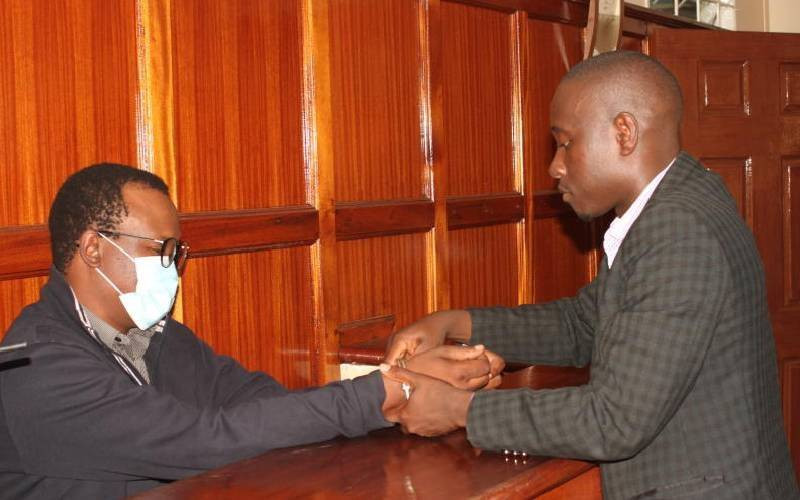By Pravin Bowry
Tom Cholmondeley’s murder trial has generated heated debate in the press and raised questions about our justice system, which need to be addressed.
The general perception is that Cholmondeley got away lightly, the court having disregarded his previous conduct of having been involved in a prior incident in which an individual was killed.
The law of evidence enacts an intricate process of proving guilt. The constitution gives a citizen certain protections. Evidence of previous convictions can only be adduced after conviction.
Cholmondeley had not gone through a full trial in the earlier matter, there was no conviction and evidence of earlier incident could not have been brought to the attention of the court. Even if the Judge knew of the incident, through the media, his trained mind and rules of evidence dictate him to disregard all the matters out of the court as extraneous.
The judge’s verdict depended only on what evidence was adduced in court. Section 15 of the Evidence Act is interesting and deals with "Facts showing system". The section reads: "When there is a question whether an act was accidental and intentional, or done with a particular knowledge or intention, the fact that such act formed part of a series of similar occurrences, in each of which the person doing the act was concerned, is relevant."
Good Legal Reasoning
Should the prosecution have introduced the evidence of the previous matter under this section to show that the accused allegedly had a wanton propensity to shoot and kill?
The DPP did not choose this path for good legal reason, and this section is only used rarely as in cases of serial killings.
The second point is whether Cholmondeley got a different brand of justice from the ordinary Kenyan. Perhaps he did.
In matters where public interest is great, and the press, especially overseas media, the Judiciary to uphold its image gives priority, gives early dates and follows the matters more diligently resulting in the scale being tilted in favour of the accused. Nothing abnormal about that as well. The reality, however, is that the rich, the influential, race factor aside, are in our system better placed to expedite justice. Expediting justice is not within the preview of the accused, but of the Judiciary.
In Cholmondeley’s case, a preliminary matter of whether defence should or should not have given statements to the prosecution went to the Court of Appeal and delayed the trial process by over a year.
Accelerating Justice
Murder cases in the High Court these days are being disposed at a faster pace as assessors are no longer part of the system and contentious "confession" related objections non existent.
Now to the matter of sentencing. The law gives the judge the power of reducing a murder charge to manslaughter but power based on legal principles. It cannot be faulted, other than by an appeal process. The judge is given discretion to sentence, even discharge an accused or sentence him from one day to a life imprisonment. The court exercises this discretion guided by law, not arbitrarily or vaguely but regularly based on established rules.
Stay informed. Subscribe to our newsletter
The fact that the accused gave first aid to the deceased, and arranged for his transfer to the hospital were indicative of the fact that he was not a callous killer deserving a long sentence and this seems to have been taken into account.
A forensic scientist, discussing the case academically, last week strongly felt that Cholmondeley did not get a fair trial as the scene of crime was not adequately preserved, it was interfered with and material evidence disappeared.
That is the other side of the coin, which the Court of Appeal will no doubt dwell into to determine if Cholmondeley was rightly or wrongly convicted.
The author is a lawyer in Nairobi
{[email protected]}
 The Standard Group Plc is a
multi-media organization with investments in media platforms spanning newspaper
print operations, television, radio broadcasting, digital and online services. The
Standard Group is recognized as a leading multi-media house in Kenya with a key
influence in matters of national and international interest.
The Standard Group Plc is a
multi-media organization with investments in media platforms spanning newspaper
print operations, television, radio broadcasting, digital and online services. The
Standard Group is recognized as a leading multi-media house in Kenya with a key
influence in matters of national and international interest.
 The Standard Group Plc is a
multi-media organization with investments in media platforms spanning newspaper
print operations, television, radio broadcasting, digital and online services. The
Standard Group is recognized as a leading multi-media house in Kenya with a key
influence in matters of national and international interest.
The Standard Group Plc is a
multi-media organization with investments in media platforms spanning newspaper
print operations, television, radio broadcasting, digital and online services. The
Standard Group is recognized as a leading multi-media house in Kenya with a key
influence in matters of national and international interest.








